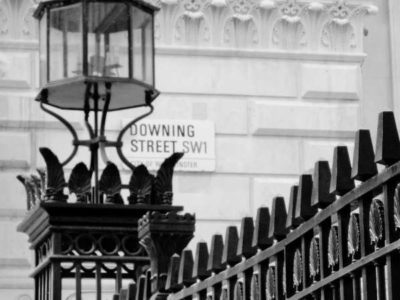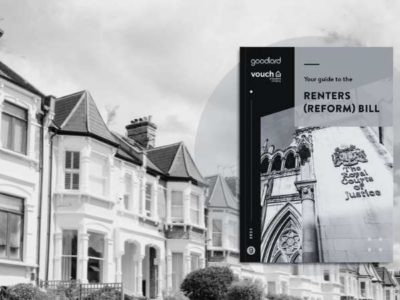The fallout from the mini-Budget continued to impact the market, with November seeing a sharp slowdown in annual house price growth to 4.4%, from 7.2% in October.
Prices fell by 1.4% month-on-month, after taking account of seasonal effects, the largest fall since June 2020.
While financial market conditions have stabilised, interest rates for new mortgages remain elevated and the market has lost a significant degree of momentum.
Housing affordability for potential buyers and home movers has become much more stretched at a time when household finances are already under pressure from high inflation.
The market looks set to remain subdued in the coming quarters.
Inflation is set to remain high for some time and Bank Rate is likely to rise further as the Bank of England seeks to ensure demand in the economy slows to relieve domestic price pressures.
The outlook is uncertain, and much will depend on how the broader economy performs, but a relatively soft landing is still possible.
Longer term borrowing costs have fallen back in recent weeks and may moderate further, especially if investors continue to revise down their expectations for the future path of Bank Rate.
Given the weak growth outlook, labour market conditions are likely to soften, but they are starting from a robust position with unemployment still near 50-year lows.
Moreover, household balance sheets remain in good shape with significant protection from higher borrowing costs, at least for a period, with around 85% of mortgage balances on fixed interest rates.
Stretched housing affordability is also a reflection of underlying supply constraints, which should provide some support for prices, commented Robert Gardner, Nationwide’s Chief Economist.
| Headlines | Nov-22 | Oct-22 |
|---|---|---|
| Monthly Index* | 528.2 | 535.9 |
| Monthly Change* | -1.4% | -0.9% |
| Annual Change | 4.4% | 7.2% |
|
Average Price (not seasonally adjusted) |
£263,788 | £268,282 |
Affordability becoming more stretched
Even before the recent increases in mortgage rates, affordability was becoming more stretched across the UK, though with considerable regional variation, Gardner continued.
To explore how this is impacting potential buyers Nationwide used regional income data to calculate where in the income distribution a prospective purchaser would sit if they were purchasing the typical first-time buyer property in each region, with a 20% deposit and borrowing four times their income.
If the typical buyer is located higher in the income distribution it suggests affordability is more stretched, with more people priced out of the market.
In broad terms, the picture that emerges is that this hypothetical typical buyer is located further up the income spectrum as you go from the north to south of the country.
For example, in Scotland and the North of England, this typical buyer would be in the 30th income percentile, while in the South West they would be in the 80th percentile, and above the 90th percentile in London and the South East.
Some regions have seen a more pronounced deterioration in affordability in recent years than others.
In Scotland and the North region, the typical buyer is now located in the 30th percentile, compared with the 25th percentile in 2019, before the pandemic struck.
Similarly, in East Anglia, East Midlands and West Midlands, the typical buyer has moved from the 60th percentile to the 70th percentile.
However, the biggest deterioration in affordability since 2019 has been in Wales, with the typical buyer now located in the 60th income percentile, compared to the 40th percentile in 2019.
A higher income percentile signals that a larger proportion of people are priced out of the market or needing to borrow a greater income multiple to buy a home.
Conditions remain most stretched in the capital; in 2019 the typical London buyer was already located above the 90th income percentile.
The surrounding South East region has now joined it, with the typical buyer moving from the 80th income percentile in 2019, Gardner concluded.
Jeremy Leaf, north London estate agent and a former RICS residential chairman, comments:
“Prices are softening but could have fallen further were it not for those two stalwarts –shortage of supply and strong employment, despite continuing concerns over the rising cost of living and particularly mortgage repayments.
The problem is not existing sales, the overwhelming majority of which are proceeding, but new business.
However, some buyers are returning now that mortgage rates are beginning to fall but they are more aware of their stronger position so are negotiating hard.”
Tomer Aboody, director of property lender MT Finance, comments:
“With the full impact of the Kwasi Kwarteng Budget being felt, the fall in prices isn’t surprising as markets reacted sharply, resulting in higher mortgage rates and lack of confidence.
As the market continues to stabilise since Rishi Sunak took over, we should see a steadier picture going forward.
With buyers stretched when it comes to affordability, the government needs to assist in helping banks be more flexible in their lending and helping buyers continue to move.
Could the government potentially help by writing off some mortgage payments against tax for example?”
Avinav Nigam, cofounder of real estate investment platform, IMMO, comments:
“A key driver behind the slowing of house-price growth over the year to November is higher borrowing costs, since interest rates have risen in order to curb higher inflation.
Longer-term rates and expectations of future borrowing costs have calmed in recent weeks.
However, the uneven impact of this is important to mention, not just for its potential impact on overall demand and supply, and therefore average house price growth.
The trouble with higher borrowing costs, and indeed expected higher borrowing costs, is that the impact is not felt uniformly.
Stress tests mean that even people who can afford to buy today are not able to.
The people who suffer most are younger and poorer people renting now, and aspiring to home ownership, since they are not able to borrow due to affordability stress tests.
These people need quality, energy-efficient and safe rental homes more than ever.
There is an opportunity for professional investors to step in and re-capitalise the market, upgrade the quality and energy performance of existing housing, benefitting the people and their communities who still need a place to call home.”
Tom Bill, head of UK residential research at Knight Frank, comments:
“The impact of the mini-Budget continued to reverberate in November, with the largest monthly fall in house prices since the early days of the pandemic.
Financial markets have been reassured by new government’s economic plan but the mortgage market is playing catch up.
Mortgage rates should keep edging downwards as the effects of the mini-Budget wash through the system, which should settle the nerves of buyers and sellers, even as a 13-year period of ultra-low borrowing costs comes to an end.
We expect house prices to fall by 10% over the next two years and the reality of higher rates will bite more after Christmas.
Mortgage offers made before the mini-Budget will begin to lapse and increase downwards pressure on prices from 2023.”
Alex Lyle, director of Richmond estate agency Antony Roberts, comments:
“The market has proved to be remarkably resilient, despite increasingly challenging conditions.
This slowdown in price growth is not surprising as we are finding that sellers are being sensible and considering lower offers, sensing that sentiment has shifted a little over the past few months.
We are likely to see a lot of soft marketing in the run-up to Christmas with agents and sellers testing the market to find the right level before launching new stock in the new year.
Those agents who have joined the industry in the past 18 months and found the market to be easy could well find that next year is a very different story.
Good agents will come into their own, while some of the lesser-experienced may well fall away.”
Mark Harris, chief executive of mortgage broker SPF Private Clients, comments:
“House prices continue to rise year-on-year but at a considerably slower pace as higher mortgage costs, along with the rising cost of living, impact on affordability.
Swap rate volatility has calmed significantly since the mini-Budget debacle when mortgage rates soared.
A number of lenders have reduced the price of their fixed-rate mortgages since then but even so, there are still many people coming off fixes who are in for a payment shock.
We could see lenders come to market with more attractive pricing in January as they start from scratch in terms of building their business for the new year.
We are finding that some clients are opting for penalty-free tracker or variable mortgages while they wait for fixe-rate mortgage pricing to edge down further, although this strategy will not suit all borrowers.
The markets expect a further interest rate rise at the Bank of England meeting next month, potentially with more to come in the spring, although the peak in rates may now not be as high as it might have been without the reversal of various Truss government measures.”
CEO of Alliance, the Real Estate Fund, Iain Crawford comments:
“Despite the challenges of economic uncertainty the housing market continues to hold up pretty well, with the latest figures showing prices marginally down when compared to last month.
As expected, challenges such as increased mortgage costs and the usual seasonal slowdown at this time of year have started to bring us back to pre-pandemic normality.
Those expecting a housing crash are likely to be disappointed as real estate remains one of the most sensible investments you can make, and even if we see a gradual 5-10% price decline in the coming year – the massive growth seen over the last couple of years should still leave us in good spirits to tackle whatever the coming months may bring.”
Director of Benham and Reeves, Marc von Grundherr, comments:
“Further market slowdown is to be expected as a consequence of recent political errors, ongoing economic uncertainty, and the cost of living crisis.
A gradual reduction in the rate of house price growth should be welcomed, as this will help the market steadily return to pre-pandemic norms rather than falling off a cliff edge.
First time buyers will surely be rubbing their hands.
In many ways London is well-positioned to absorb the slowdown as house price growth has been more subdued in the capital, while Londoners are also better placed to financially stomach the trickier economic landscape we will be faced with next year.”
Managing Director of Barrows and Forrester, James Forrester, comments:
“Whilst a 1.4% drop is the largest fall in two years, and despite many commentators and so-called experts in recent weeks seemingly encouraging meltdown within the property market, the latest figures show we are now merely starting to see a steady return back to pre-pandemic normality.
The measured pace back to a balanced market should be celebrated yet also met with the reality that we are not seeing, nor will we see, a housing market crash.
Although we are now seeing a slight reduction in price growth, with perhaps temporary and marginal price decline to follow as the market normalizes again, grinch-like forecasts and fears of a property market crash should be put to bed as fixed rate mortgage costs now reduce as an early Christmas present for homeowners.
With dwindling economic headwinds in 2023, we expect the property market to perform well.”
Managing Director of House Buyer Bureau, Chris Hodgkinson, comments:
“Once again the signs are clear that we are seeing a housing market with little fuel left in the tank as the challenges of economic uncertainty and runaway inflation take their toll.
What goes up must come down and as expected, the marked decline in buyer demand driven by over-inflated prices has resulted in a current downward trajectory in values to match diluting demand.
Many buyers have been faced with increasing mortgage costs and in turn this has applied the brakes to an already stalling market – and so we can expect a tricky time ahead as people struggle with higher all-round costs.”
Joshua Raymond, Director at online investment platform XTB.com comments:
“This is the fastest pace of house price declines since June 2020 during the height of the first Covid lockdown.
This 1.4% decline in house prices correlates strongly to the mini-budget turmoil when thousands mortgage deals were removed from the market and prospective buyers faced stark rises in borrowing costs.
The mini budget was an earthquake for the mortgage sector and these price falls paint that reality in the clearest terms.
Yet the most important aspect now is whether this marks the start of a new downward trend in house prices or is it a short term blip?
There is much evidence to suggest the downward trend has begun but perhaps we can expect shallower declines.
Average mortgage rates hit their highest levels since 2014, highlighting the increase in borrowing costs.
Yet with the BoE predicting that the market is overestimating the scale of prospective interest rate hikes, we might not expect borrowing costs to rise as much as initially feared in the medium term which might help slow the pace of price declines.”
Simon Gerrard, Managing Director of Martyn Gerrard Estate Agents, comments:
“The housing market is still treading water, as a direct result of September’s so-called Mini Budget.
In some cases, would-be buyers are adopting a ‘hold steady’ approach until the New Year to see what happens with mortgage rates and house prices.
There are, of course, many who still want to buy right now – and this is particularly apparent in more affluent areas of the country, such as north London.
But the big issue continues to be supply, there simply aren’t enough properties coming onto the market.
This is a problem that will only get worse as the Government ties itself in knots by avoiding confrontation with the ‘NIMBYs’ who oppose house building.
As housing supply fails to keep up with our rising population, we are running the very real risk of our children having nowhere to live!
The country, and the housing market, needs strong leadership to help steer it through these choppy waters and it remains to be seen whether Rishi Sunak can offer the steady hand we require.”





















Comments